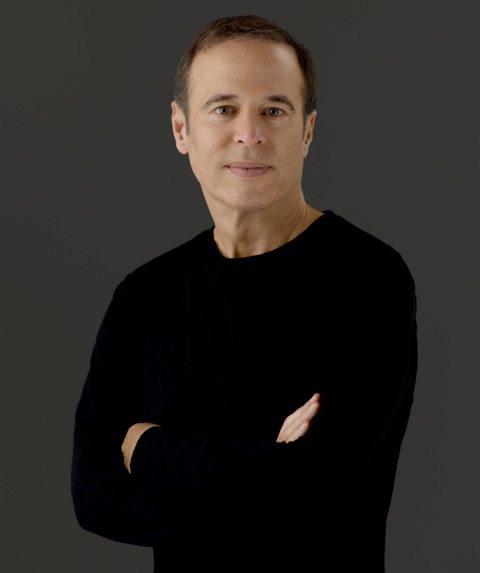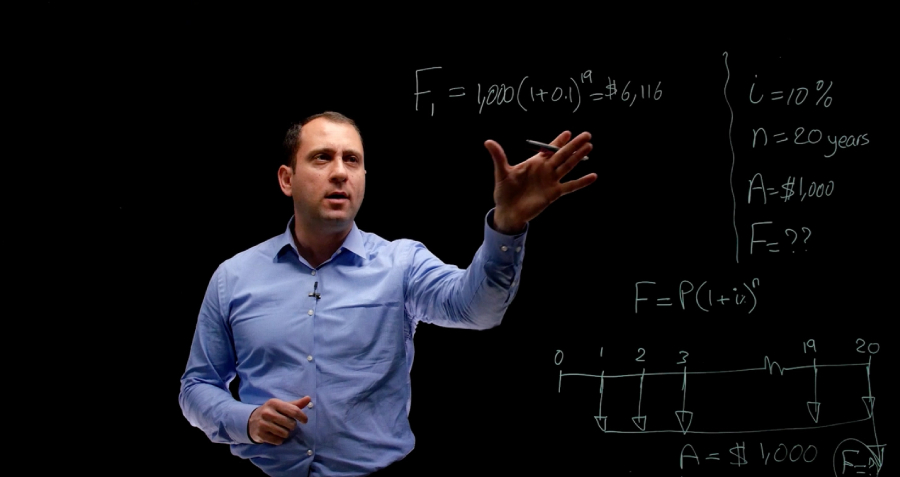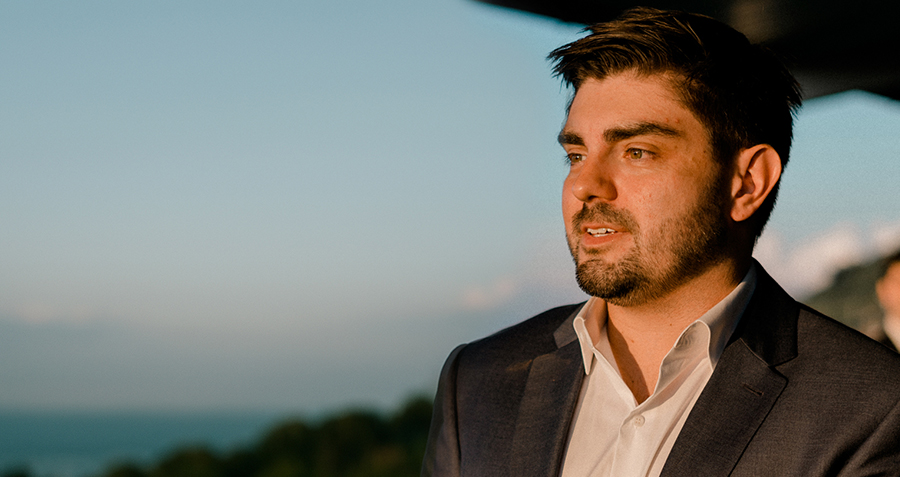
Andy Cohen, author and propagator of the ‘Assumpt! Strategy’, believes that we must acknowledge the fact that we make assumptions in the course of making important decisions, and use them in a way that benefits us.
In the early 90s, Sonicare and Oral-B ruled the market for electric toothbrushes that sold for $50-150. Then along came a gentleman called John Osher whose toy company had developed the Spin Pop, a lollipop with a battery-operated handle that would basically twirl the candy in your mouth. Osher thought that the technology, if applied to a toothbrush, could produce an electric toothbrush for as low as $5. “He was an outsider coming into the [electric toothbrush] industry where you had industry experts saying, ‘It’s impossible to create an electric toothbrush for not a lot of money because we are the experts and we know what it takes,’” says Andy Cohen, a speaker, author and educator. “But he challenged those assumptions and said, ‘Who said that it has to be expensive? We know that the consumers want them but they can’t afford them.’”
He presented his Spin Pop-meets-toothbrush idea to the P&G CEO who challenged his own assumption and said, “We always go internally but let’s experiment and go externally.” The result was that P&G finally unveiled something called the Crest SpinBrush which disrupted the electric toothbrush industry—and sold for $5. The SpinBrush was able to see the light of the day and disrupt an entire industry because both Osher and P&G’s CEO challenged their assumptions.
Cohen, who is writing a book titled The Seven Most Dangerous Assumptions and How to Use Them for Your Success, has created something he calls the ‘Assumpt! Strategy’, a process one can use to overcome barriers “that stand in the way of an organization’s, team’s or individual’s success”. He defines an ‘assumpt’ as “being able to acknowledge assumptions and then decide what to do with them”. In this interview he explains why we must pay heed to the assumptions we make and how we should deal with them.
Q.You suggest that there are some fundamental problems with making assumptions. Why?
A.An assumption by definition is something that you treat as a truth rather than a belief, something that you tend to take for granted. Most assumptions are fairly subconscious. Particularly in today’s world where there is rapid change, things happening around the world affect what you do in your region. There is a lot more that has a global impact. Changes in technology [are] more rapid and more disruptive. You have areas that are generational: four generations working together. Each generation has assumptions because of the way they’ve grown up, their experiences, etc. In order to adapt to all these influences, we become more dependent on assumptions.

We only have a certain amount of hours in a day, but we have more crucial decisions to make, and we are dealing with more unknowns. An effective way to deal with that is using assumptions. It’s like a short-cut in making a decision. We are actually making more and more decisions based on beliefs we are treating as truths. It’s like building a house and the bricks are not strong. They are susceptible to cracking. We end up being more vulnerable to making more dangerous decisions.
The other aspect is because we are being forced to change, to adapt, we need to come up with strategies that allow us to be more effective, profitable,… We need to be able to look at a problem [or] a situation and find alternative ways to deal with it. It won’t be as effective [if] we’re using an old way of thinking to deal with a new problem.
So it comes down to making decisions. If we want to make better decisions [and] at the same time think differently, then a very important tool is self-awareness of our role in terms of making an assumption. In most societies and cultures, making [an] assumption has a negative connotation.
Q.Is this connected with heuristics and behavioral economics? For instance, the principle of ‘anchoring’ makes it very hard for us to remain unbiased.
A.Cognitive bias means that we’re not even aware of our prejudice toward stuff. I will pick the ‘shortcut’ decision [despite] knowing that it’s a riskier decision but there’s a trade-off advantage of making it quickly. There are a lot of different kinds. There is reaction formation which is a form of assumption. There’re probably a dozen psychological terms and they all fall within the category of assumptions.
There are two kinds of assumptions: financial and non-financial. Financial assumptions relate to, particularly, for example, insurance. Insurance uses actuaries to make a level of assumptions which they base their policies on. Those are recognized assumptions: they recognize potential risks. But they are a methodology in a way of doing business. They’re based on numbers.
There is also a strong business trend that goes back to the 90s [when] Rita Gunther McGrath said, let’s take a look at the business and figure out exactly where we want to go: if we want to generate X in sales, how we are going to get there and how we’ll figure out how to get there. It will identify a number of assumptions related to each step and we’ll test those assumptions along the way, set them up. She called them milestones.
Steve Blank, a serial entrepreneur, was influenced by Rita McGrath. He said, let’s look at what the customer wants, identify the customer needs, [and] set up some assumptions and test those. He then influenced Eric Ries, who coined the term ‘Lean Startup’: you start up very small, identify certain assumptions, make those assumptions and test them out. You do them in small steps. This way you’re able pivot, change direction.
They are really very powerful models today, but we look at them more as financial assumptions. Most of the assumptions are based around numbers so we’re going to put in X number of dollars in so and so days; produce X number of products in so and so time. Everything’s measured in terms of sales, production… they are more empirical-based measurements and very effective.
This is great, but what drives the business? How do you get your X numbers? You get those numbers by the behavior of the people within the organization which has nothing to do with how many units you sell. It’s how the person thinks about solving a problem, how they relate to one another [or] treat each other, how leaders engage other people, how [they] work as a team, and when faced with a difficult situation, how do people deal with that?
This is all about decision-making and problem-solving that has nothing to do with numbers per se. It has to do with individual behavior. So the assumption that I’m talking about, it could be financial, but what we think is equally important is that they are behavioral assumptions, which is the way we think about any type of situation or any type of problems. So if you look at both financial and non-financial, the ‘assumpts’ deal with both situations. It puts a lot of emphasis on the non-financial component.
Q.Can assumptions play a positive role in context setting or giving us a sense of realism sometimes?
A.Assumptions are neither good nor bad. [They] are a key component of every decision you make. Chris Argyris, a professor at Harvard, created a line-up called the ‘ladder of inference’. It basically took a snapshot of the invisible process. The invisible process is the way we think. Thinking is invisible. Unless [we] verbalize what’s going on, you don’t know what’s going on in my mind. It’s invisible. So he kind of mapped it out. He created a number of steps: starting with collecting data, selecting that data that forms the assumption and that assumption influences your basic thinking, decision and then action.
[The Nursing Model] is an interpersonal model [which] says that when two people interact with each other, their behaviors elicit assumptions on each side. [In] just the interaction between us, we are each forming assumptions. [The model says that in] nursing, the difference between good nursing and bad nursing is the ability for both the patient and the nurse to articulate what those assumptions are, to bring them to the surface because if they don’t [and] they each act on it, it can cause a problem.
The key is not to judge yourself for making assumptions because some assumptions are good. It’s how we function. We couldn’t function without making assumptions. The idea is to be able to raise your self-awareness, to be able to do more with the assumptions that you make. That’s part of what the assumpt is about: raising your self-awareness so you have the freedom to utilize your assumptions to the best advantage for yourself and those around you. So don’t judge yourself for making assumptions. It is unproductive. Don’t deny that you are making assumptions. Embrace that you are making them. Once you know that, then you have a power that you didn’t have before because now you have a level of self-awareness that didn’t exist. And that level of self-awareness is very powerful.
Q.We are being increasingly confronted by more and more variables in our daily lives. We often want to take shortcuts and not think through everything so much. How should we deal with that?
A.We acknowledge it instead of denying it. That’s key. One of the elements of the assumpt is the acknowledgement. By acknowledging, what you are doing you are doing two things You’re saying to yourself: ‘I’m moving forward on this but I’m basing a lot of my decisions on assumptions and that’s neither good nor bad, but I need to be able to identify those assumptions so I can decide how to move forward or how much to invest in moving forward or I need to do something and use my assumptions in a way that’s going to help me think differently.’
When you deal with all these variables, it’s like, the variables as they accumulate become a barrier because you’re faced with multiple decisions and unknowns. You are dealing with them all at the same time. As much as we might love the Apple Watch, we might love some new technology from Samsung, but in reality, that’s a change we see and perceive that [it] benefits us. But most changes, we resist. We don’t really like change because it means all the history we bring to the party—life experience, education—we have to shift it. We have to take time for it and adjust. It’s an emotional and physical reaction, so most people do not like change.
A lot of people feel bad that they resist change internally. They don’t realize that everyone is going through it. The big assumption is that change is hard. That’s because we blame ourselves for not adapting, but the reality is that it’s difficult. So what we want to do is each step along the way deal with these variables. See them as a number of assumptions we are going to make along the way… It doesn’t say: ‘I’m not good at change’, the assumption really is that ‘I don’t like change’. If we are able to raise that self-awareness, then we give ourselves the ability to look at the elements we’re dealing with within change.
It’s not just one big category called change. It’s a lot of little steps that we have to take along the way. Yes, we are able to acknowledge our assumption around that, then we are able to start to look at those individual steps. Little steps that you take and that give us the power we didn’t have before, because now we can manage them. We can decide what to do with them. They may or may not be too hard.
Q.If I am a traditional company working with that old mindset, how do I start challenging the assumptions that I have especially when I don’t have the luxury of letting thing take shape over time and not delivering results in the short run?
A.First, identify some barriers that face you [with regard to] budgets, people, industry. Next, identify the reasons why you cannot break through those barriers.
Why did Apple develop iTunes? They were able to find a way to digitize music in a profitable way versus Sony which wasn’t able to or they didn’t figure it out until after Apple did. It has a lot to do with the way they are thinking. They were thinking as an organization and their focus was the organization. Sony focused on protecting copyrights. Apple was focused on how to meet consumer needs. So identify the assumptions that you are making within that organization.
Change takes place at a rapid pace and you don’t have the freedom to just sit back and make a decision. Do I want to change or not? You don’t have the choice. It is being made for you. So you need tools and ways to deal with it.
Q.What are the basic principles of the ‘assumpt model’?
A.There are four components. The first component is the ‘awareness stage’. You have to acknowledge and understand what assumption is. The different components—the cognitive component, bias component, heuristic component, the reactive formation component—are all basically assumptions. Then you have to acknowledge that you make assumptions multiple times a day. You have to also recognize that there’s nothing wrong with making assumptions. Assumptions are neither good nor bad. It’s what you do with them that make a difference.
The second step is ‘acknowledgement’: having the tools to be able to identify the assumptions that you make because most assumptions are subconscious, even taken for granted. There are a number of ‘symptoms’ that [indicate] you’re making an assumption. ‘I don’t have enough time, money or energy to do this’ is a symptom that you’re making an assumption.
We’ve been creating a database of assumptions that people make from leadership to IT, to marketing, sales, innovation,… So people can start to tap into the assumptions they make by industry because each industry makes its own assumptions and acts in particular ways.
Now the ‘addressing’. You can break down the addressing component in three ways. Once you are aware that you’re making an assumption, you have a couple of choices. The first is that you can proceed as you normally would: acknowledge your assumption and own it. The second is the acknowledgement both from self-awareness and also publicly that you’re making an assumption. That’s what an ‘assumpt’ is.
If I am a leader of an organization, the most dangerous assumptions are the assumptions that I can’t admit, I don’t know. What if a leader says: ‘I’ve never been in this situation before. I don’t know exactly what to do.’ A lot of leaders assume that you can never do that, but in today’s world, leaders need to be able to make that assumption and acknowledge it. If a leader says to his group, ‘Okay, I think we need to change direction and do XYZ’, people in that organization follow the leaders and they won’t question them. They want to move forward and they don’t want to be the one stopping them. If a leader says, ‘My assumpt is that in order to get here, we need to do this’, what he is now saying is ‘what I’m proposing is not necessarily true; it is what I believe.’ If you challenge that assumpt, you are not challenging me as an individual, you’re challenging that assumpt. It’s external. It’s not so personal because I acknowledge that this is what I believe; any belief is open to be looked at and explored.
The act of acknowledging an assumpt gives everyone the permission to explore the underlying principles that we are about to act on. The assumpt helps you make better decisions because by raising the level of self-awareness of what your decisions are based on, you are able to make better decisions [as] you’re not just following something that’s a total belief and no truth. When you raise that self-awareness, you’re giving yourself permission to look at alternatives which are new ways of doing things, thinking differently.



















